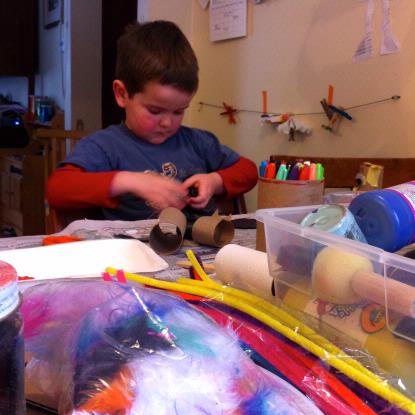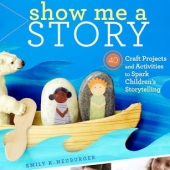My third guy has a makers thing going, always has, from his years-long fascination begun in toddlerhood with stickers to extended explorations with collage, pipe cleaners, origami, knitting and now yo-yo (okay, that’s not something made, but think about it and it kind of is an ephemeral art form). As a really not-crafty gal (save for jamming), I really enjoy watching him in pursuit of mastery and really, less mastery than in process. Process is interesting. I think that’s why, when it comes to writing, I enjoy revision so much.
Anyway, process can also be intimidating. When you envision product—a book, a picture, or a hat—you vault to the end and the moment you realize that to reach that destination you have to figure out how to get from here—idea—to there—the thing you may trip yourself up in the impossibility of the task rather than the discovery process invites.
Or at least that’s me. I am quick to fearfulness, practically reflexive in that regard.

My friend, Stacia, posted these pictures on Facebook with a caption that read something along the lines of nap time for the small one meant craft time for the larger one (and his mama). Oh, wow, I cannot tell you how awed I am by her and by him, how swiftly I could go into a big, old momfail about my inability to just whip up little TP creatures with my daughter, and how appreciative I am to places like the studio at the Eric Carle Museum for providing both safe space and project all laid out for me and my children. It’s my favorite place in the museum.

All this background might be important to understand my framework for reading Emily Neuberger’s lovely book Show Me a Story. I wrote about it for Momfilter this week (pop over, read on). One of the things I most enjoyed was her ability to break things down so that the process in the form of storytelling-related craft activities did not always seem to mysteriously insurmountably impossible. There were limits to my sense of possibility. Your limits might differ.
When I think about it, some of my most favorite writing projects have been to profile makers. I think it’s because I do love stories of process and I can utilize my ability to communicate their passion for and devotion to process. Although they love what they create, I’ve noticed that makers tend to care more about the making than the product. And to me, that’s really fascinating.


